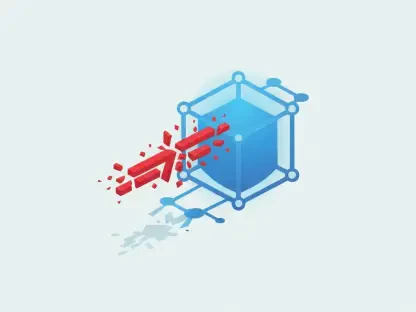Mastering MLops is essential for businesses aiming to integrate artificial intelligence (AI) and machine learning (ML) into their operations effectively. As AI and ML technologies continue to evolve, leveraging these advancements becomes indispensable for maintaining a competitive edge. By implementing effective MLops strategies, organizations can streamline their AI/ML initiatives, optimize their performance, and drive innovation across various business sectors. This article explores key strategies that can help organizations navigate the complexities of MLops, ensuring they stay competitive and drive innovation.
Understanding Foundational Differences
To begin successfully with MLops, it is crucial for organizations to understand the foundational differences between generative AI models and traditional ML models. Unlike traditional ML models, which are optimized for specific tasks and are generally more cost-effective, generative AI models possess unique data requirements and pipeline complexities. Traditional ML models often utilize pre-trained architectures or lightweight training processes, making them easier and more economical to implement. They are specifically designed to tackle well-defined problems, which keeps their operational expenses relatively low.
In contrast, generative AI models handle unstructured data, such as text and images, and require significantly more complex pipelines for processing. This complexity is due to the need to manage conversation history, process prompts, and integrate private data sources, which results in greater operational expenses due to higher computational power requirements. Additionally, generative AI models tend to incur higher latencies. Given these factors, organizations must carefully evaluate whether their use cases justify the deployment of generative AI models, balancing the potential benefits against the associated complexities and costs.
Model Optimization Techniques
Model optimization plays a critical role in ensuring the effectiveness of AI/ML implementations. Traditional ML typically employs strategies such as fine-tuning pre-trained models or initiating training from scratch based on specific requirements. These methods enable organizations to adapt models to their unique needs efficiently. However, with the advent of generative AI, advanced strategies such as retrieval-augmented generation (RAG) have emerged. RAG leverages private data to provide contextual understanding, thereby enhancing the outputs of generative models.
An essential consideration in model optimization is the decision between general-purpose models and task-specific models. Often, a smaller, specialized model designed for particular tasks proves more efficient and accurate than a versatile but less optimized general-purpose model. By selecting the appropriate model type, organizations can achieve better performance and cost-effectiveness. Moreover, fine-tuning these models for specific use cases allows for higher precision and relevance in the results, further driving the success of AI/ML initiatives.
Effective Monitoring Practices
Effective monitoring of AI/ML models is crucial for ensuring their ongoing performance and alignment with business objectives. Traditional ML models benefit from well-defined metrics such as accuracy, precision, and F1 score, which are relatively straightforward to evaluate. These metrics provide clear, quantitative measures of model performance, enabling organizations to track and improve their AI/ML solutions consistently.
Generative AI models, on the other hand, often involve more subjective metrics such as user engagement or relevance. These subjective metrics require architectures capable of providing measurable outputs that align with business goals. Determining appropriate metrics can be challenging and highly context-dependent, necessitating a tailored approach. To reinforce this alignment, support from business metrics is crucial. By integrating business-centric metrics with traditional performance measures, organizations can ensure that their generative AI models deliver value and meet strategic objectives.
Advancements in ML Engineering
Advancements in ML engineering have played a pivotal role in the widespread adoption of AI/ML technologies. Traditional ML has thrived on open-source solutions due to their accessibility, flexibility, and cost-effectiveness. Components like Long Short-Term Memory (LSTM), You Only Look Once (YOLO), XGBoost, and Scikit-learn exemplify the efficacy of open-source frameworks and libraries in supporting various ML applications. These tools have democratized access to sophisticated ML capabilities, enabling organizations of all sizes to harness the power of AI/ML.
However, generative AI models currently rely more on commercial solutions like OpenAI’s GPT models and Google’s Gemini due to the high costs and complexities involved in building them from scratch. These commercial endeavors often bring competitive advantages in terms of performance and capabilities, albeit at a significant expense. Despite this, open-source alternatives are steadily improving, closing the performance gap and offering viable options for organizations willing to invest in fine-tuning or training on their data. Models like Llama and Stable Diffusion exemplify the growing efficiency and potential of open-source generative AI solutions.
Efficient Scaling Strategies
Efficiently scaling AI/ML systems is critical for handling increasing data volumes and user demands. Best practices for data management, classification, and system architecture are essential to achieving high performance at scale. In the context of generative AI, retrieval-augmented generation (RAG) plays a pivotal role. RAG leverages internal data to adjust the context of general-purpose models, enhancing the relevance and accuracy of their outputs. This approach involves embedding and querying internal data into a vector database to provide context-aware responses specific to user queries.
When scaling architectures, considerations such as embeddings, prompts, and vector stores become vital. Fine-tuning models for particular languages, geographies, or use cases ensures that performance aligns with specific needs and user expectations. Although designing an architecture that supports extensive fine-tuning can be complex, it facilitates comprehensive A/B testing across various model components, ultimately optimizing outcomes and ensuring scalability.
Metrics for Success
Aligning model outcomes with overarching business objectives is essential for assessing the success of AI/ML implementations. Key performance indicators (KPIs) such as customer satisfaction and click-through rates provide valuable insights into the real-world impact of AI/ML solutions. These KPIs help organizations measure success beyond traditional technical metrics and evaluate how AI/ML implementations contribute to broader business goals.
Human feedback remains crucial for evaluating generative models. Human-in-the-loop systems play an integral role in fine-tuning these metrics, verifying model performance, and ensuring alignment with business objectives. Advanced generative AI tools can sometimes complement or even replace human reviewers, accelerating the feedback loop and enhancing model reliability. By incorporating human feedback and business-centric KPIs, organizations can continuously refine their AI/ML models and ensure they deliver meaningful results.
Solution-Oriented Approach
The success of MLops hinges on developing holistic solutions rather than focusing solely on isolated models. A solution-oriented approach combines various ML techniques into a unified framework, encompassing rule-based systems, embeddings, traditional, and generative AI models. By integrating these diverse components, organizations can create comprehensive solutions that address complex business challenges effectively.
Critical questions guide AI/ML strategies, such as whether a general-purpose solution or a specialized model is required, how success will be measured, and the trade-offs between commercial and open-source solutions. Addressing these questions helps organizations align their MLops strategies with their specific business needs and objectives, ensuring that their AI/ML solutions are both practical and impactful.
Comprehensive Solution Architectures
Mastering MLops is crucial for any business looking to effectively incorporate artificial intelligence (AI) and machine learning (ML) into their operations. As AI and ML technologies advance, utilizing these innovations becomes essential for sustaining a competitive market position. Implementing robust MLops strategies allows organizations to streamline their AI/ML projects, enhance performance, and foster innovation across various industries. By effectively managing the complexities of MLops, businesses can ensure they remain ahead of industry trends and drive significant technological advancements. This article delves into pivotal strategies that can aid organizations in navigating the intricate landscape of MLops, guaranteeing they remain competitive and continue to innovate. Understanding and applying these MLops practices can lead to optimized processes, improved project outcomes, and ultimately, greater success in the rapidly evolving AI/ML arena. In essence, embracing MLops is not just an option but a necessity for businesses that wish to thrive in the future tech landscape.









